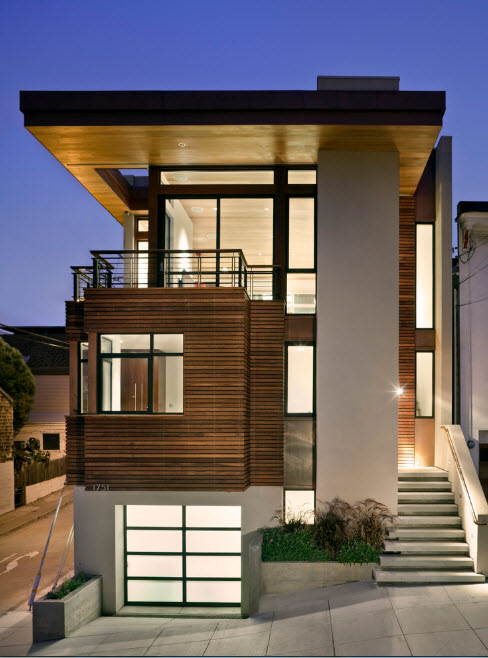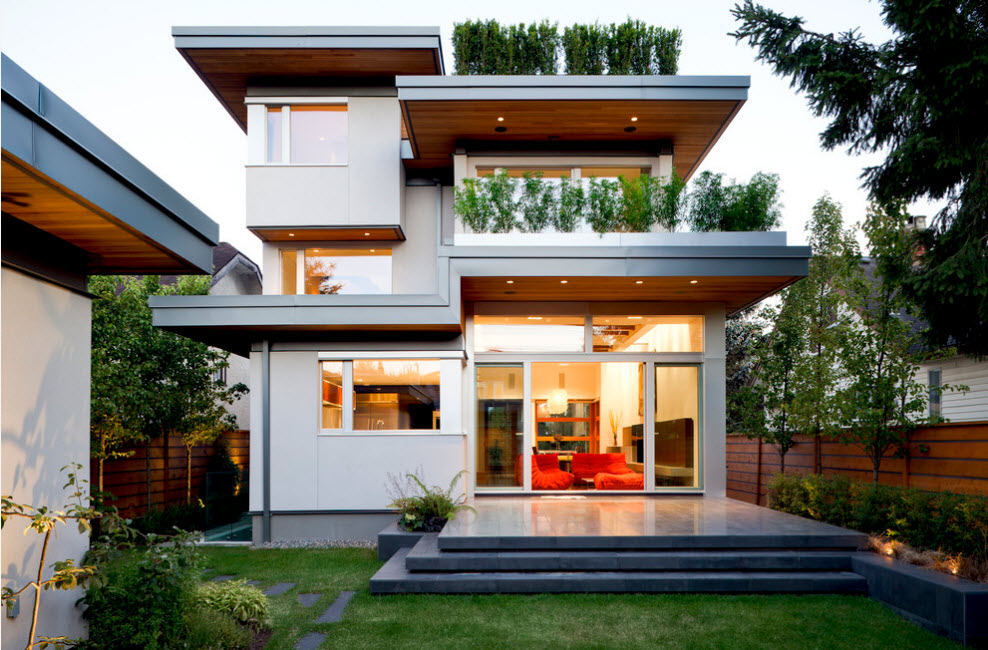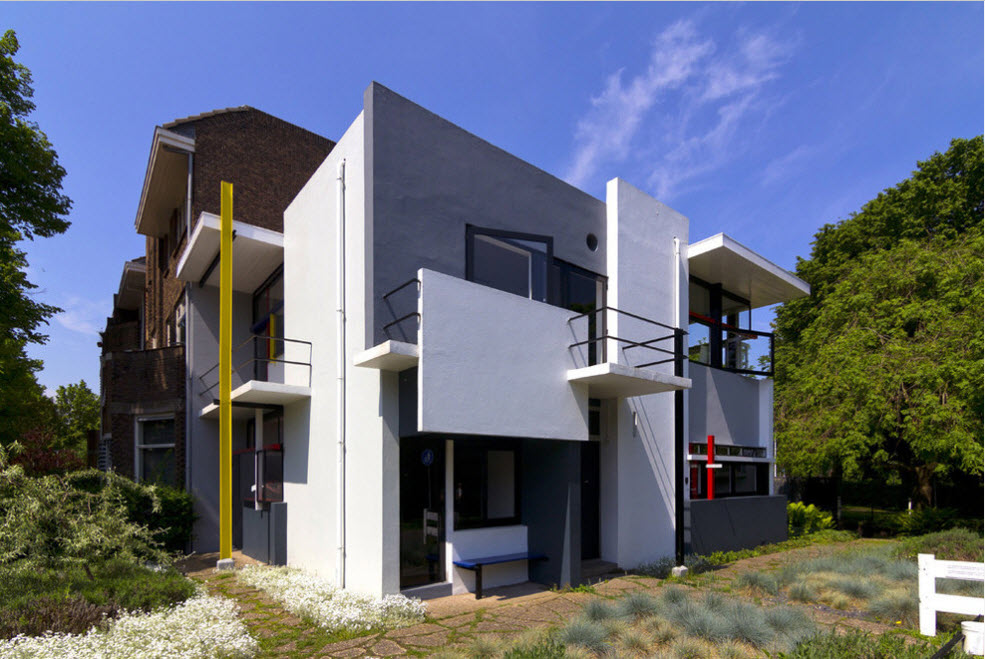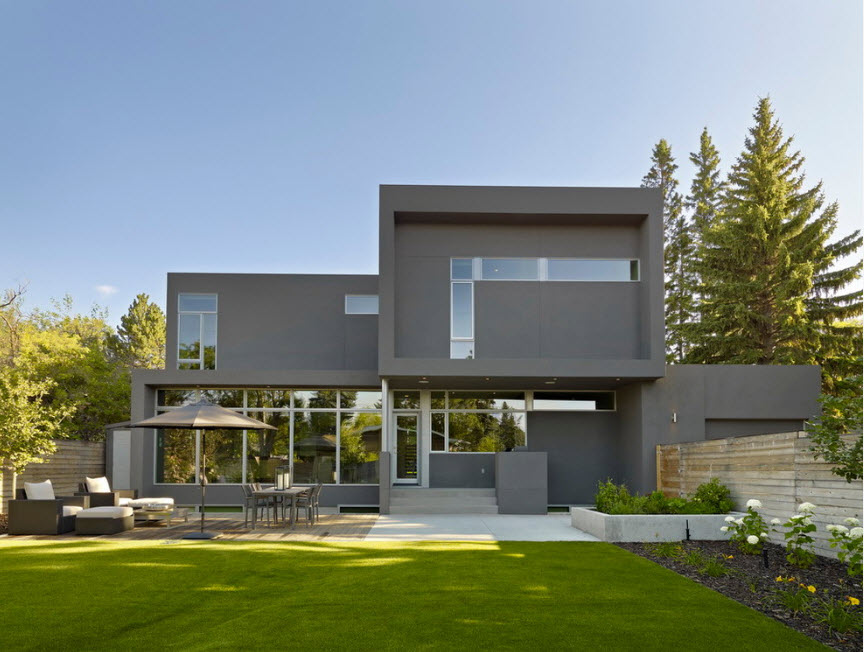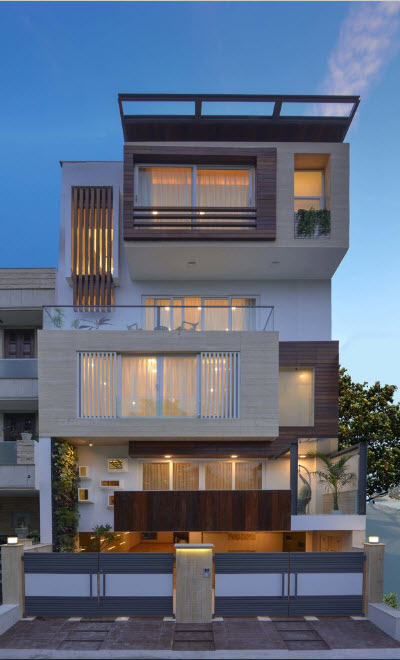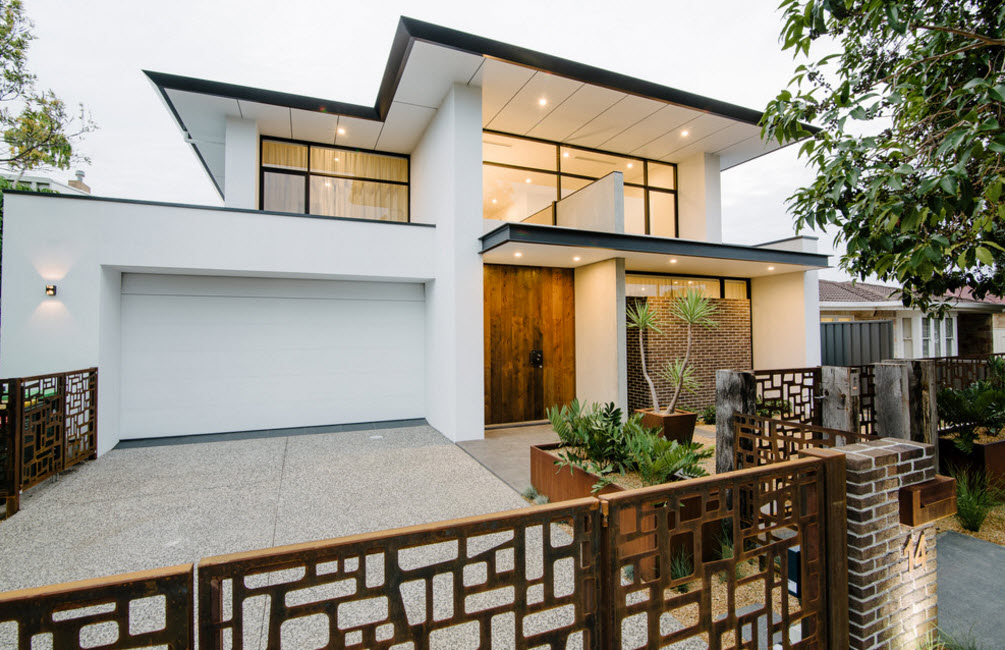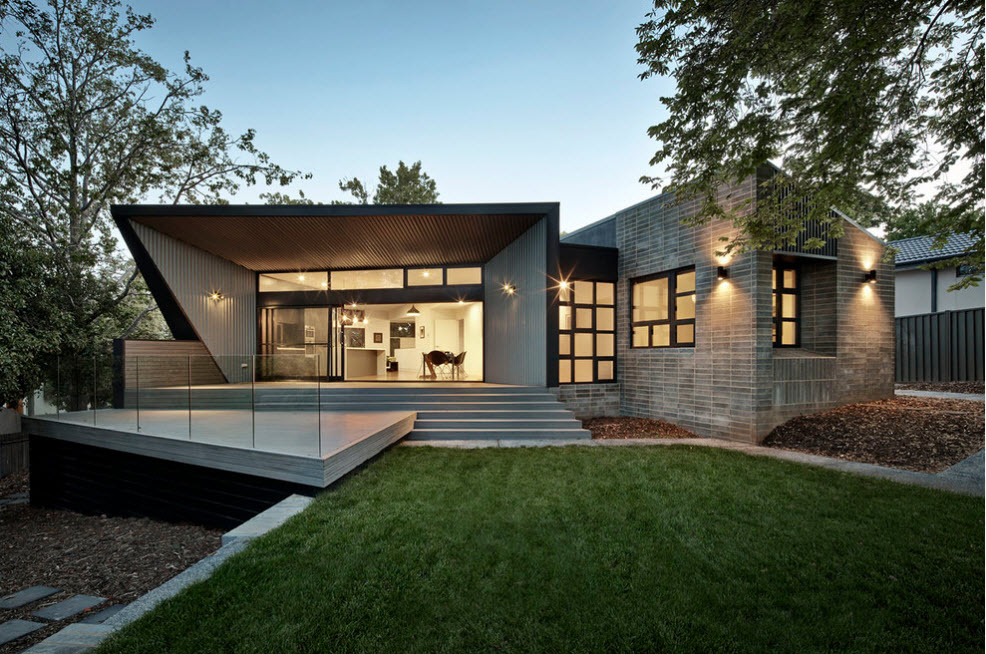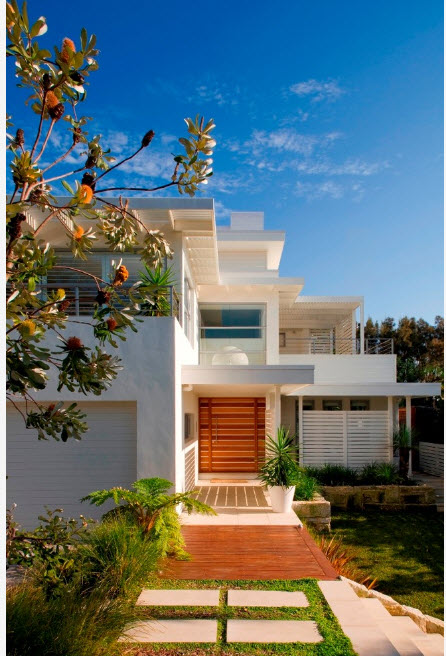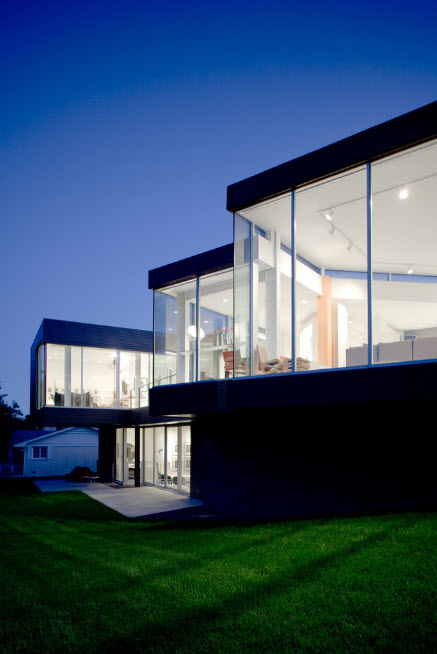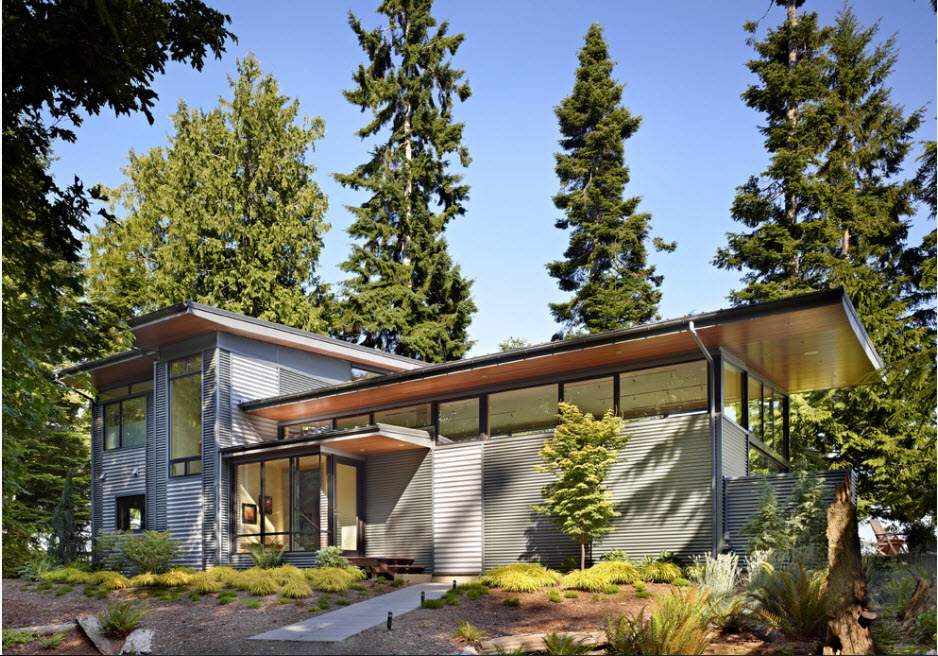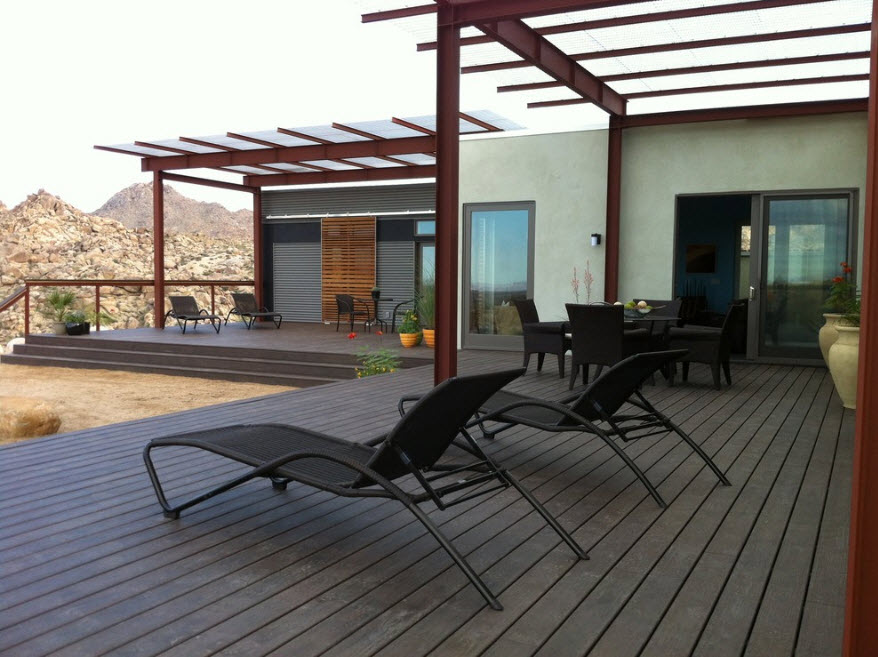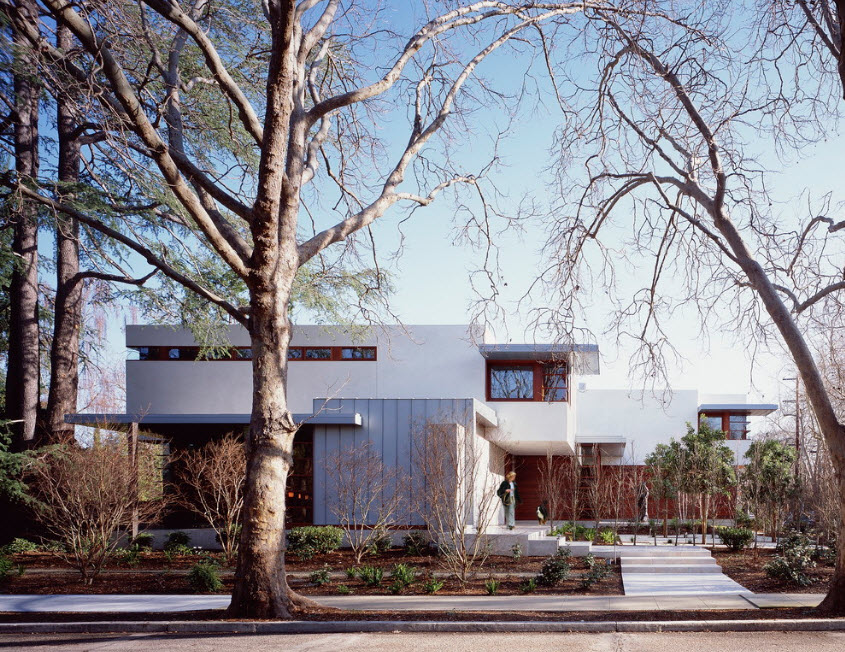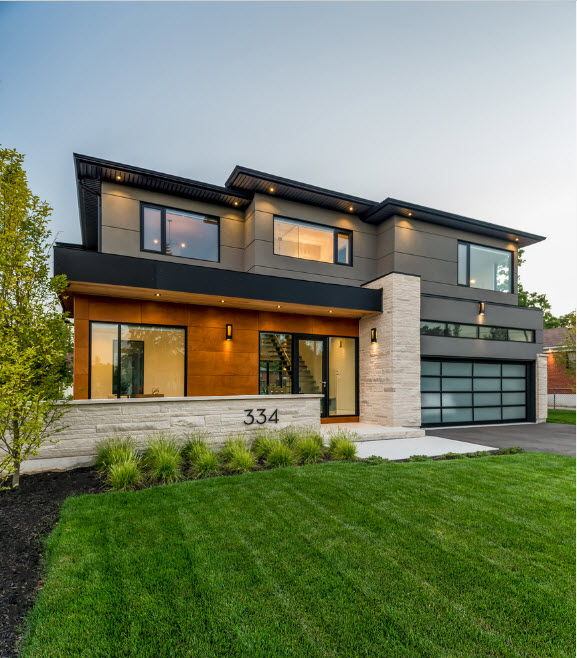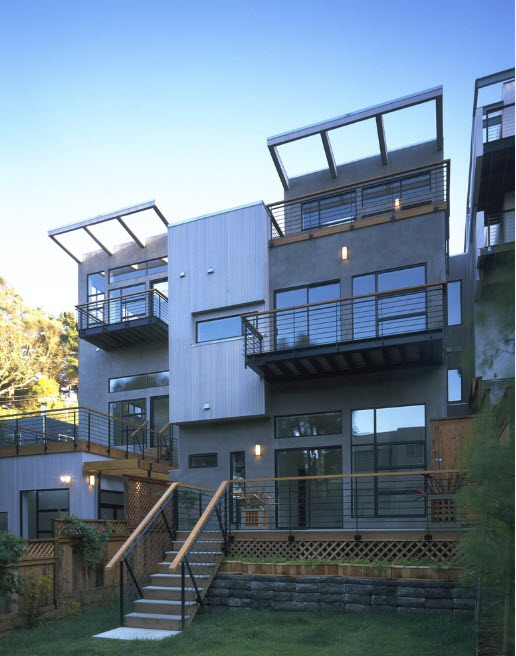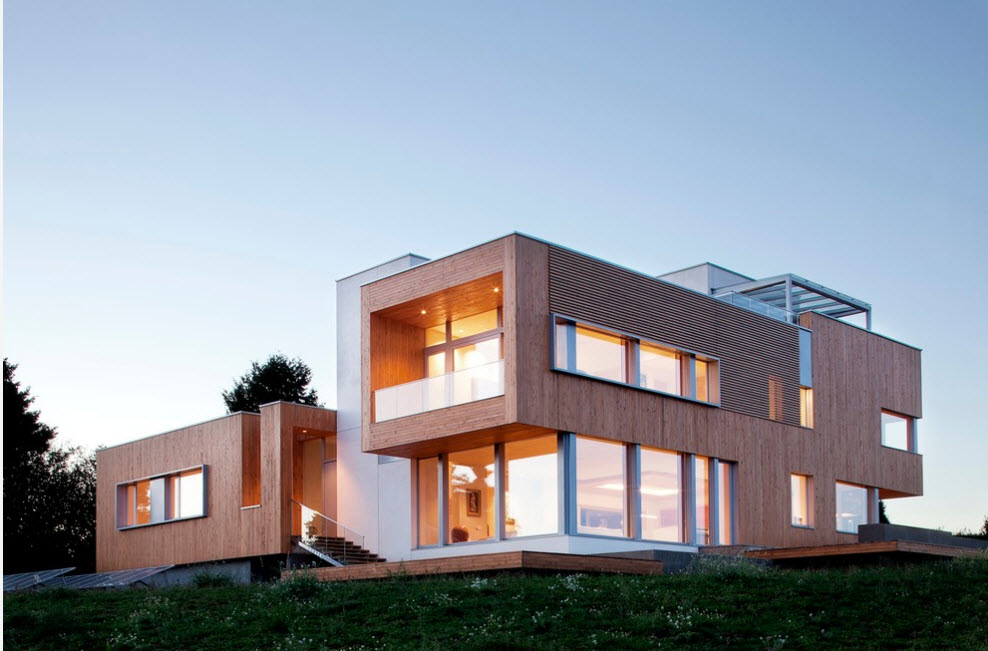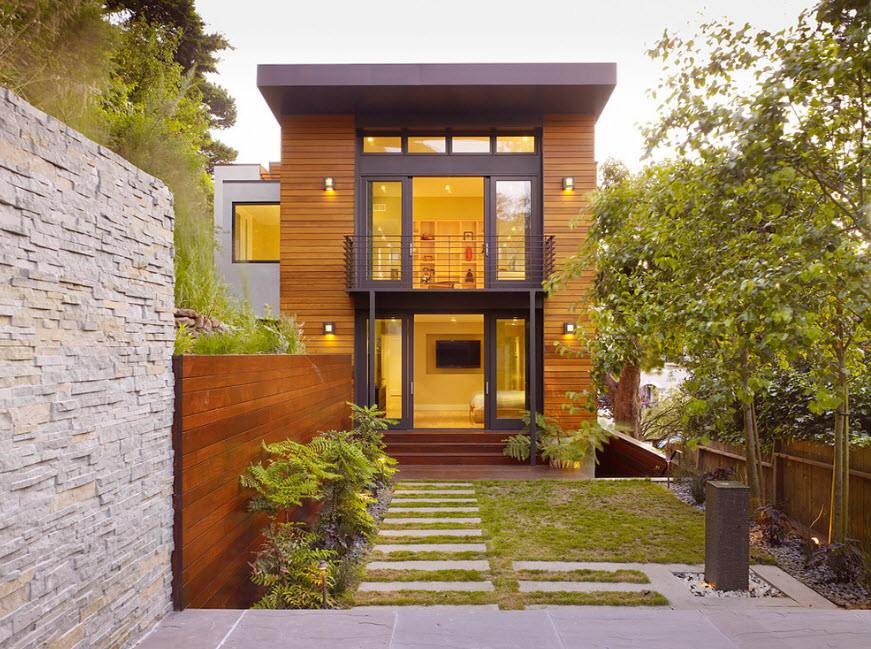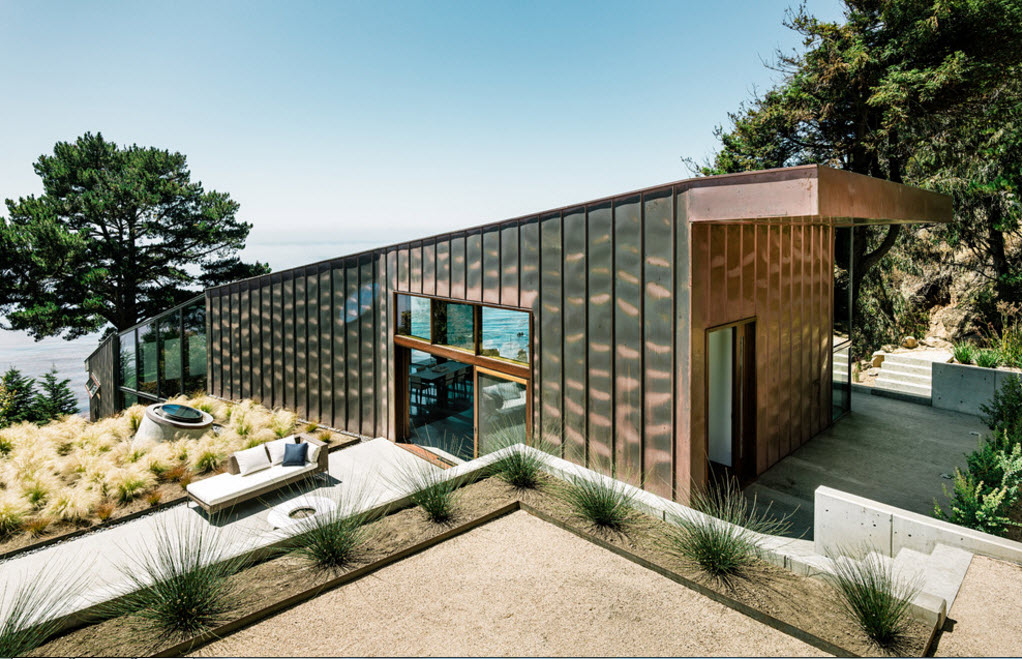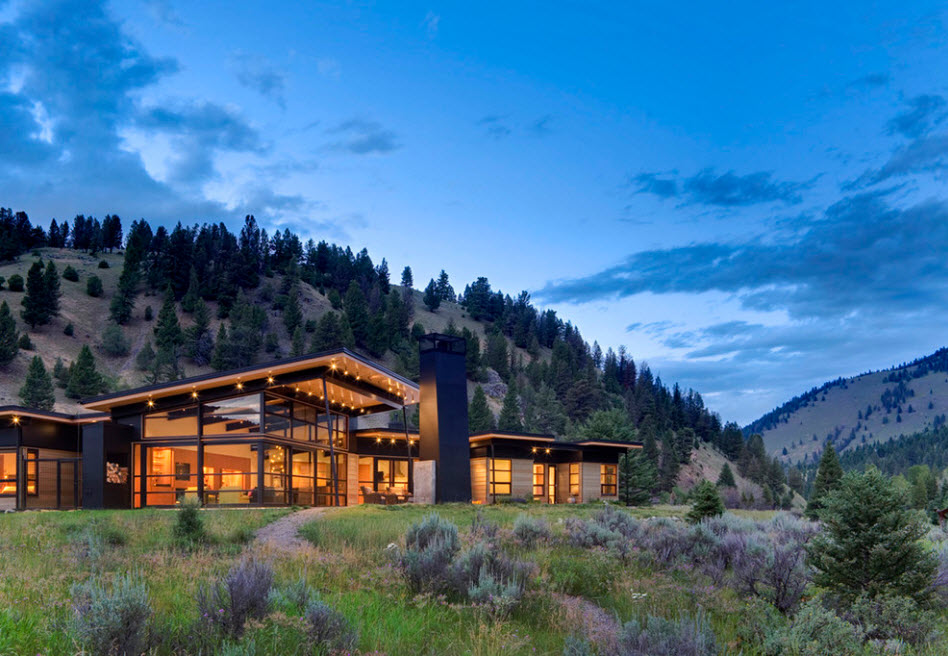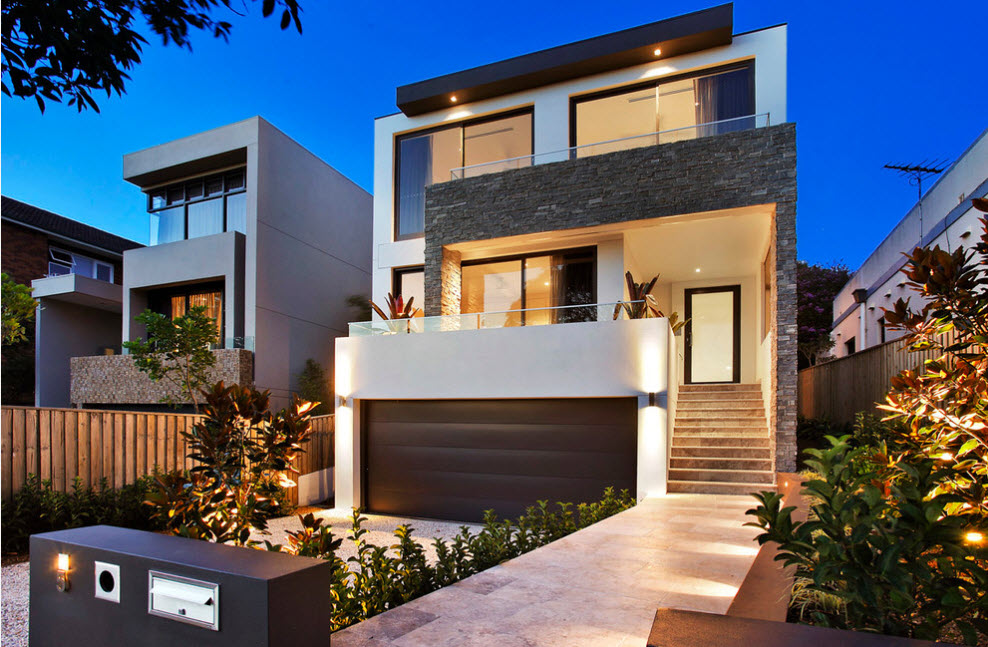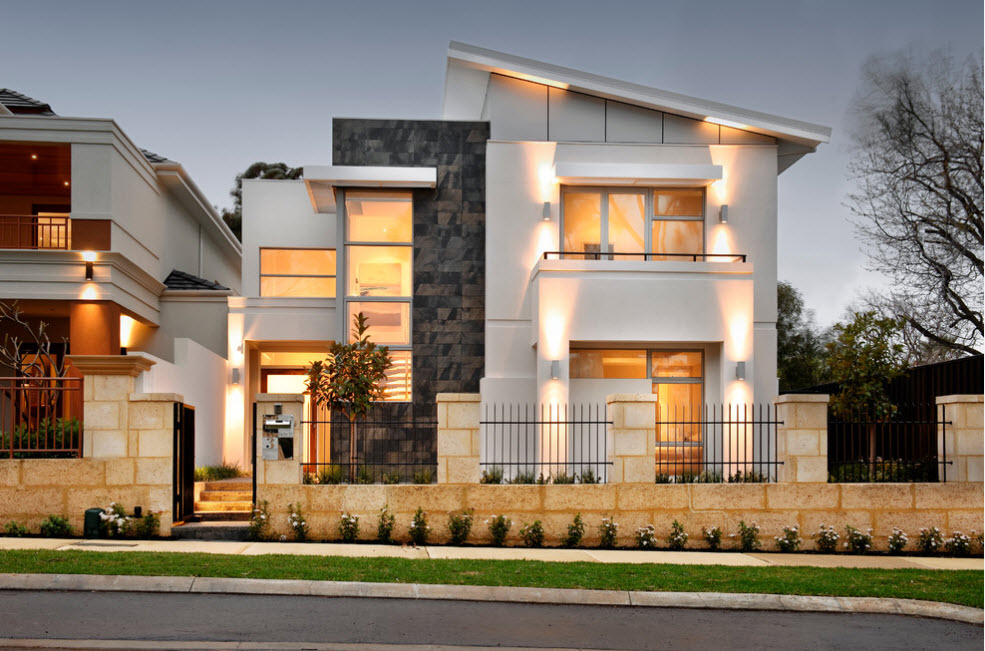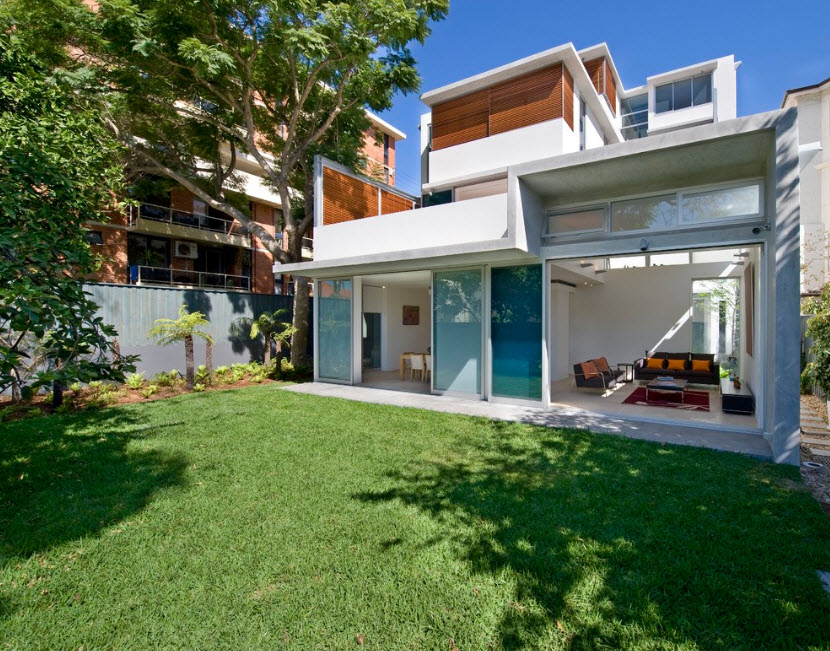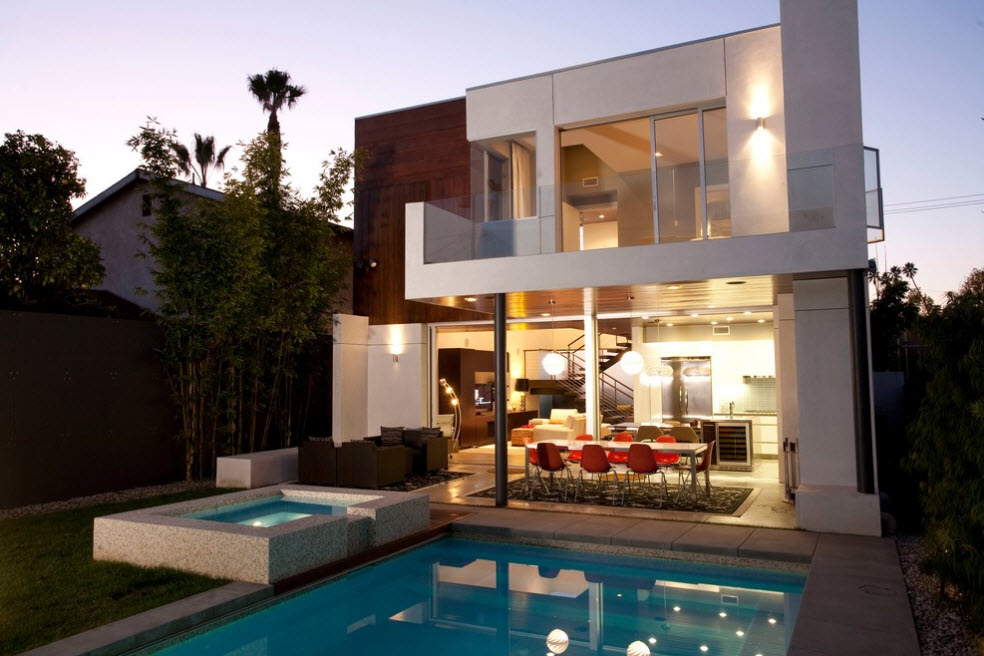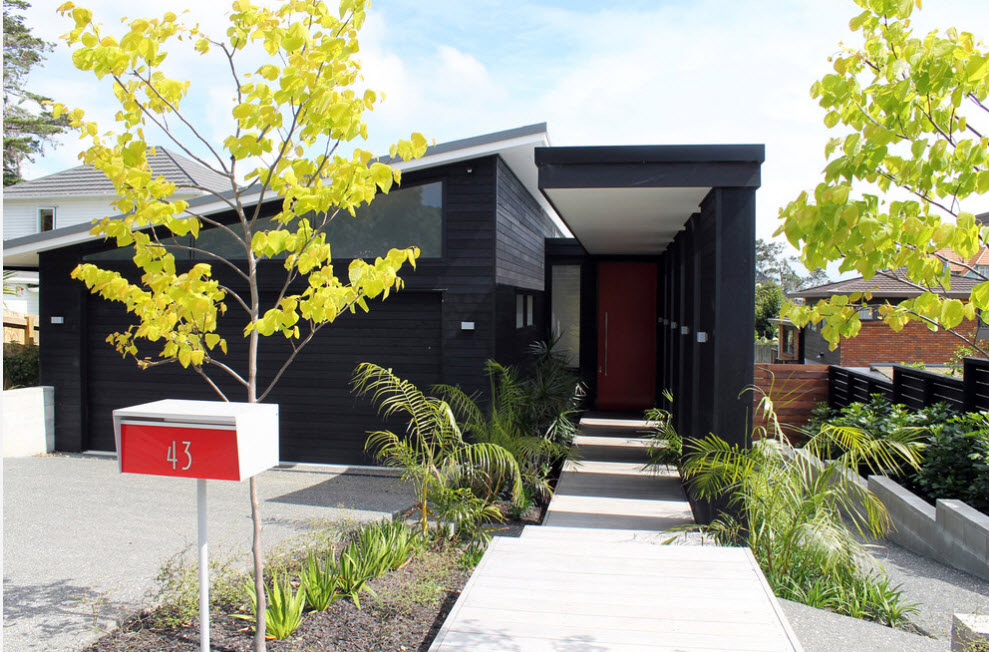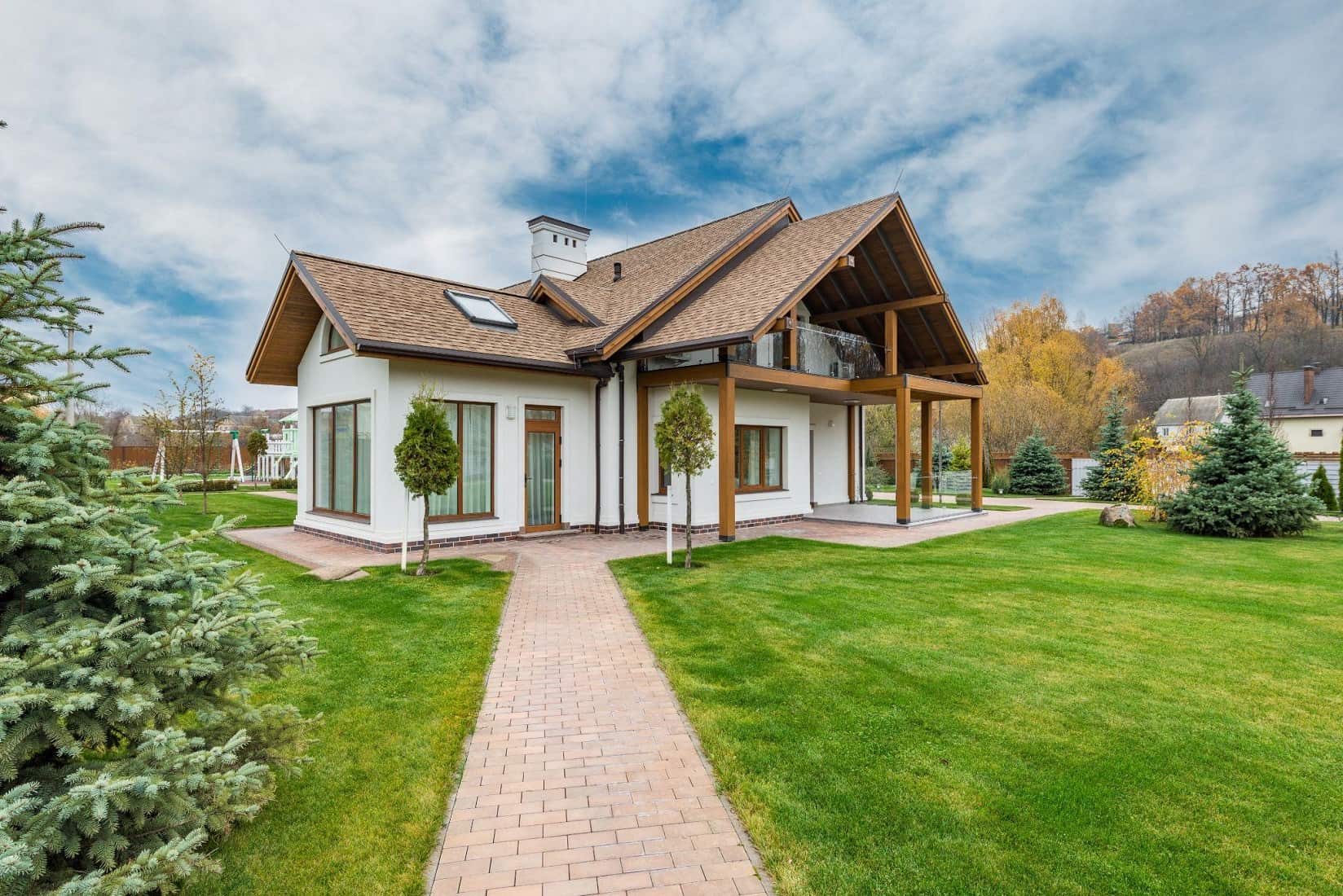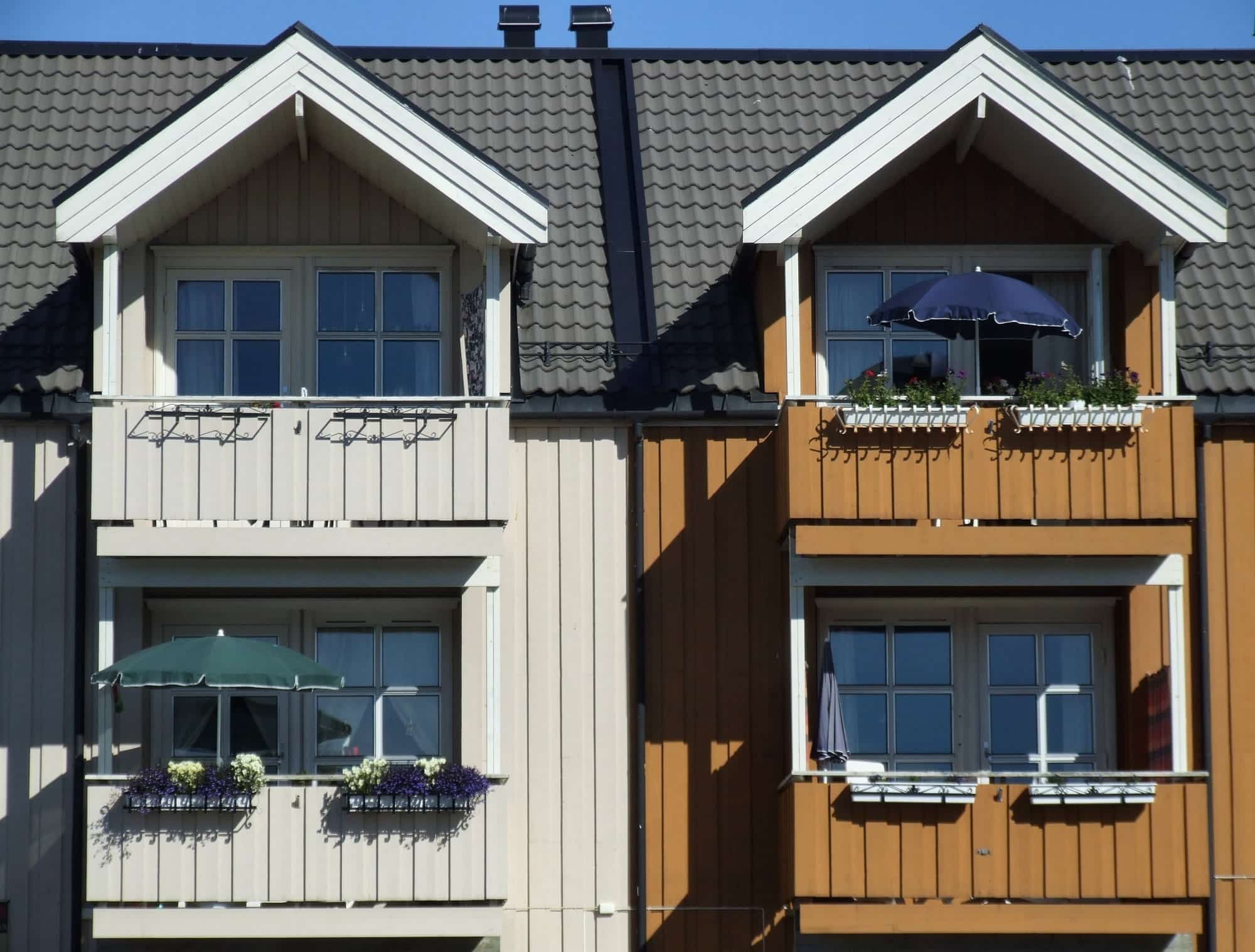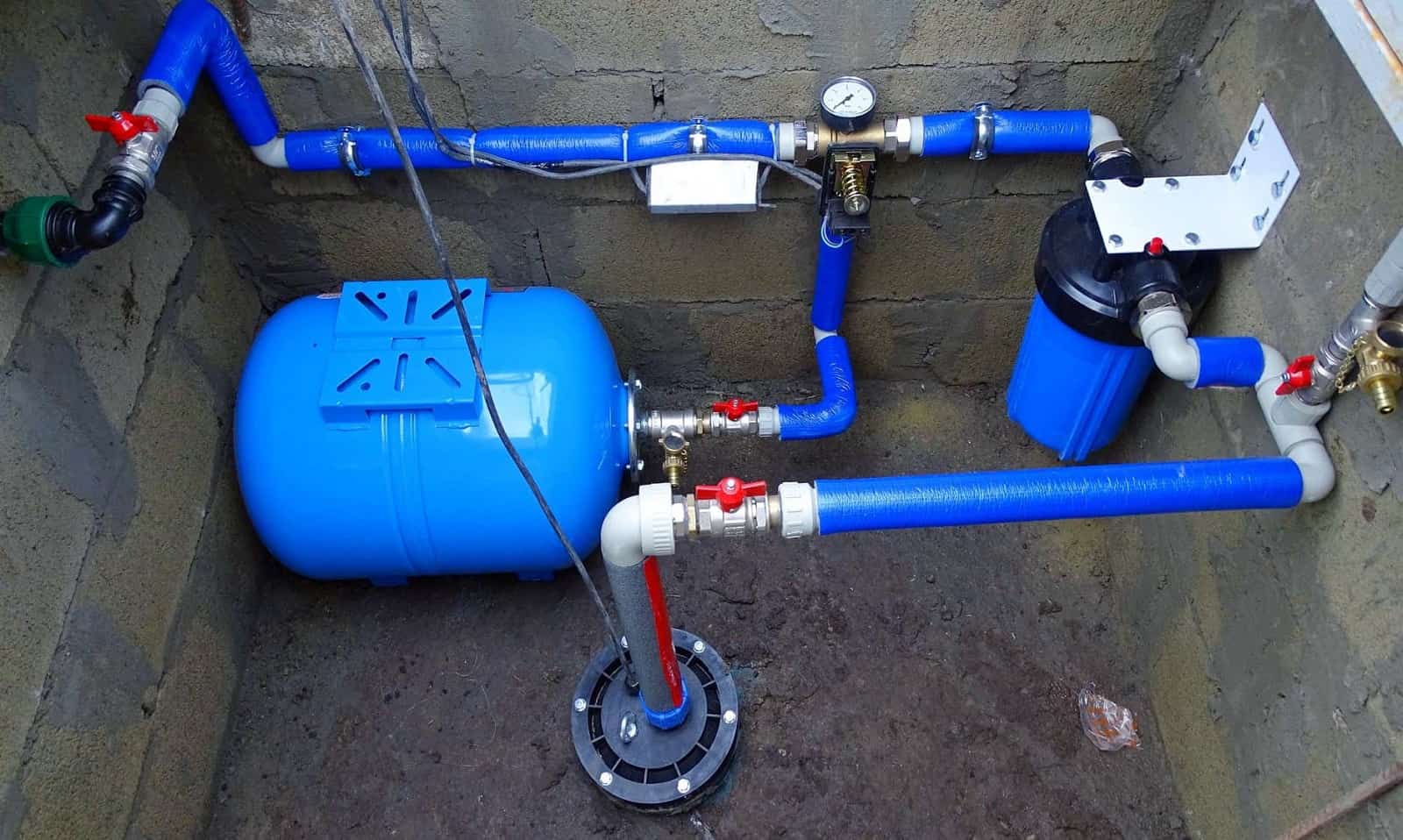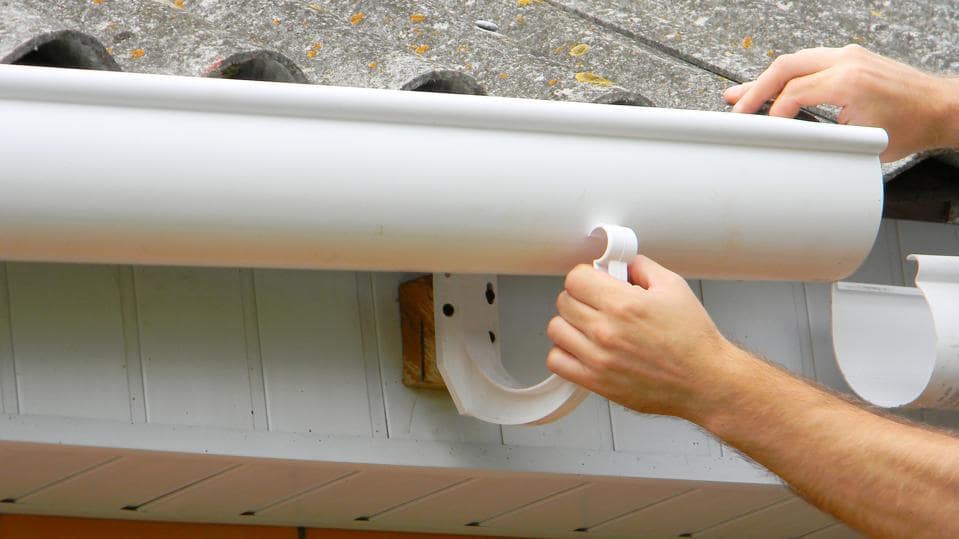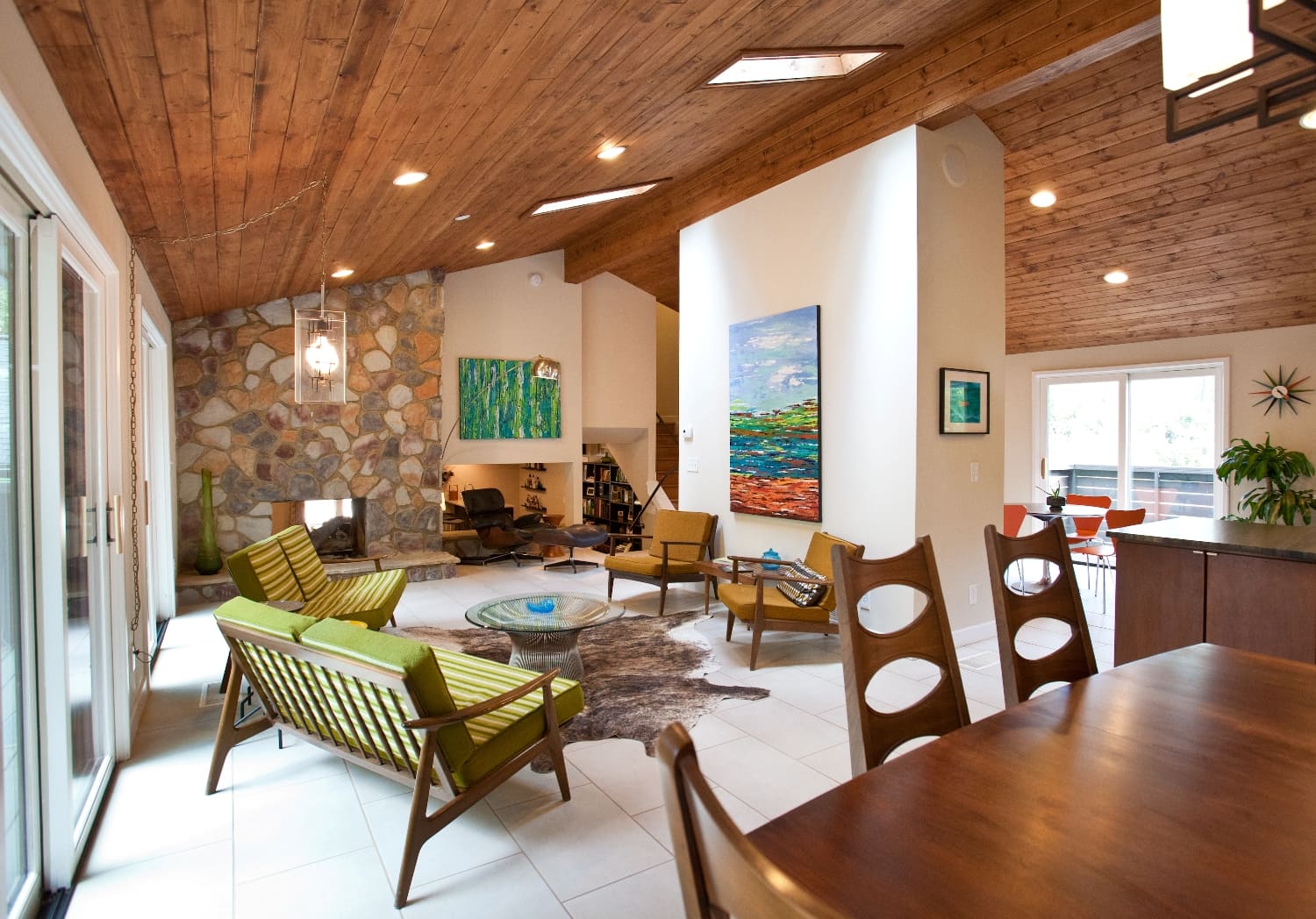The style of “high-tech” is manifested not only in the use of the most modern building and finishing materials but also in the very principle of building projects. High-tech is a challenge to traditional forms and architectural solutions, it is conciseness and functionality in a modern shell. High-tech in the construction of private homes, as well as in the construction of public buildings advocates the demonstration of human achievements in general and advanced technology in particular. Even a small one-story house may become a symbol of technological thought, the ideal of pragmatism and functionality. If you go with the times, if advanced technology and laconism are what you’re looking for, then our impressive selection of design projects of houses in high-tech style is for you either.
Features of High Tech Home Design
The house built in within canons of the high-tech style is not difficult to distinguish from other structures. Such buildings are laconic and as functional as possible, have a regular shape, subordinate to strict geometry, and devoid of decor. A harmonious combination of space, light, and form is the key to creating a practical and yet technological building that is comfortable to live in. Construction, decoration, and installation of various communications in high-tech style are not cheap. It is because at all stages of creating a home using the fruits of advanced technology, the latest words in the fields of production of building and finishing materials. But all investments pay off in the aftermath – durability, ease of operation, and lack of need for alterations make such projects profitable from various points of view.
Let’s note the features characteristic of buildings erected in the high-tech style:
- The large size of the structures, which involves both the external scale and the spaciousness of the interior rooms;
- Large and simple forms, clear lines, the prevalence of cubist and constructivist elements;
- The interior space of the houses has a minimal set of partitions, leaving the living space of the houses as free as possible;
- When decorating the facades of houses in the style of “high technology”, such materials as concrete, glass, metal, and plastic (its various modifications) are actively used. The decor is found in a minimal amount, both in the design of the facade and in the interior arrangement of the house;
- The roof is predominantly flat with an emphasis on maximum functionality. Hence, the roof is usable. It is very often equipped with a recreation area in the fresh air, a place for air baths, and even a sports field. The second option for the roof is creating a transparent roof of glass. Thus it is possible to saturate the inner rooms with a maximum amount of sunlight (while saving electricity);
- the color solutions for the facades of the houses are subordinated to the strictness and a certain coldness – different metallic shades are actively used, as well as the entire spectrum of gray, contrasting combinations of light and dark surfaces;
High-tech advocates maximum use of sunlight, so the construction of houses actively uses panoramic windows, often the entire facade is glazed, there are projects with glass inserts on the roof. By using glass to actually create walls in houses, it is possible not only to achieve maximum light inside the dwelling but also to create a visual increase in the volume of the building in terms of the exterior. Often it is possible to create the feeling that the building seamlessly transitions into the adjoining territory;
In order to reduce the light load on the interior space on hot days and not to spend money on the power consumption of split systems, glass should be equipped with a special coating that reflects ultraviolet rays. Another effective way (not for all cases) – arrangement of a pergola at the patio or in front of the house. The structure will partially block the penetration of sunlight, but it must be executed in a strict, laconic design, without decoration.
Often a spacious terrace is arranged next to the house, which not only increases the size of the building but also creates a comfortable open-air place to relax. Access to the terrace is most often in the form of large glass sliding doors, which seem to blur the line between the interior and the exterior of private apartments;
Using vegetation to decorate the facade is unacceptable – no climbing plants. But a perfectly flat lawn in front of the main entrance or in the backyard is the best landscaping option for a small yard;
Facades in the style of high-tech often have original lighting, given the use of glass and mirror surfaces, you can achieve a non-trivial effect in creating images of buildings in the twilight and darkness;
Many utility lines are part of the facade of a building. They are not hidden behind cladding but are deliberately for show. Ventilation systems or stairs become a functional feature of the building.
But in recent years we can say that the style of high-tech “softened”, became a little closer to nature. For example, we can find wood in the design of facades, most often in combination with plastered surfaces. Finishing “wood” involves the use of the following materials:
- block house;
- lining;
- glued laminated timber;
- wood imitating siding
The use of “wood trim” in the design of country houses is particularly effective. The presence of natural material (or its effective imitation) allows a “soften” a bit the industrial image of the building, slightly eliminate the uncompromising look and coldness of the building in the style of high-tech.
Variations of High-Tech
In the very stylistics of high-tech can be divided into several subgroups, each of which has its own distinctive features and characteristics:
Industrial high-tech – the name speaks for itself, industrial aesthetics (open utilities, pipes, fittings, crossbars and piles, a lot of metal elements, from heavy supports to bolts and rivets) is actively used in the design of buildings. Many ideas are taken from the design of various shops, workshops, and warehouses, effectively intertwined with the features of residential interiors;
Geometric high-tech is one of the most popular uses of this style. The basis of this variety of high-tech is to obtain complex designs, proportions, and shapes from traditional elements. Constructivism and cubism are the main sources of inspiration for this variation of the “high tech” style;
Bionic high-tech is the part of so-called “organic architecture” which seeks to imitate the forms and structures of living nature. High-tech in this case deviates from its canons, taking rounded forms, creating buildings with smooth lines. But herewith bio high-tech remains committed to its traditional materials – glass, metal, and concrete. Characteristic elements of buildings and facades are membrane slabs, the use of flexible threads and ropes, which are used to mount suspended structures. In the construction of bionic houses, great attention is paid to the environmental friendliness of all materials – safety both for people and for the environment. The active use of renewable energy sources is a trend of bio-hi-tech. Houses in the form of a drop of water, a wave, or a mountain slope are quite popular in Europe and the United States. Bionic variation of high-tech style is a splash for Western World at the time.
Modern Private House in High-tech Style: Economy, Functionality, and Efficiency
The concept of high-tech style is to achieve maximum results with the help of modern technology while using a minimum of available resources. Therefore, a modern home designed in a “high-tech” style is economical and “smart”. Modern homes are created on the principle of energy conservation and even strive for maximum energy independence. The ideal high-tech home is able to supply itself with electricity, water, and heat.
The use of solar panels allows you to abandon the cumbersome, occupying a lot of usable space in the house, central heating. And with the help of innovative methods of creating thermal insulation, you can achieve a reduction in heat loss by 40-45%. Solar panels and wind turbines – devices that help to provide autonomous energy saving, can be considered symbols of high-tech style in terms of innovation.
Country house in a high-tech style very often has its own well and is independent of the central water supply in terms of drinking and technical water (the system of filters allows you to achieve a high level of purification of water with any original composition of impurities). So-called rainwater harvesting systems, which help provide private homeowners with service water, are becoming increasingly widespread.


